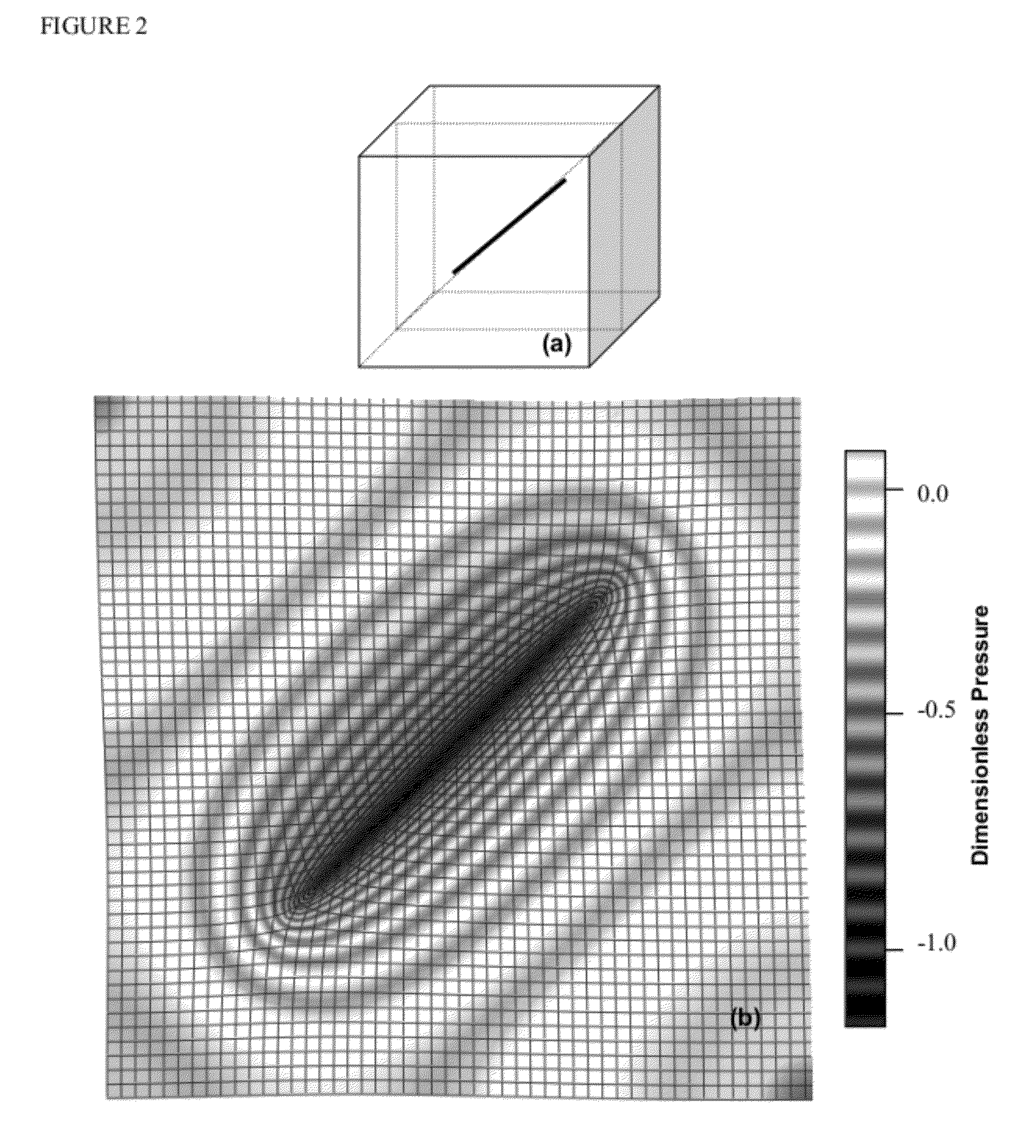Method and system for representing wells in modeling a physical fluid reservoir
- Summary
- Abstract
- Description
- Claims
- Application Information
AI Technical Summary
Benefits of technology
Problems solved by technology
Method used
Image
Examples
Embodiment Construction
[0035]The invention pertains to solutions to the three-dimensional heat equation, given in a Cartesian coordinate system in terms of potential, Φ, as
kx∂2Φ∂x2+ky∂2Φ∂y2+kz∂2Φ∂z2=φμCt∂Φ∂t-f(x,y,z;xo,yo,zo).(1)
Here, (kx, ky, kz) denote the directional permeabilities of the medium through which fluid moves, Φ, μ, and Ct represent the porosity, fluid viscosity, and system compressibility, respectively, and the last term indicates a source or sink. Potential is interpreted as pressure, P, once gravitational forces are included. In terms of the Dirac delta function, δ, a RHS point source term is represented as
f(x,y,z;xo,yo,zo)˜δ(x−xo)·δ(y−yo)·δ(z−zo). (2)
Using the two solutions given by Carslaw and Jaeger (1959) to the one-dimensional heat equation and the Neumann product rule, we have alternate expressions for the three-dimensional statement of the solution. One computes the departure from initial conditions as
PDC=abh8π3kxkykz·∫0t^Dtt3 / 2·[∑l=0∞-(2la±x±xo)24kxt]· [∑m=0∞-(2mb±y±yo)24kyt]·[∑...
PUM
 Login to View More
Login to View More Abstract
Description
Claims
Application Information
 Login to View More
Login to View More - R&D
- Intellectual Property
- Life Sciences
- Materials
- Tech Scout
- Unparalleled Data Quality
- Higher Quality Content
- 60% Fewer Hallucinations
Browse by: Latest US Patents, China's latest patents, Technical Efficacy Thesaurus, Application Domain, Technology Topic, Popular Technical Reports.
© 2025 PatSnap. All rights reserved.Legal|Privacy policy|Modern Slavery Act Transparency Statement|Sitemap|About US| Contact US: help@patsnap.com



